A Day Exploring the Snickers Gap Cluster
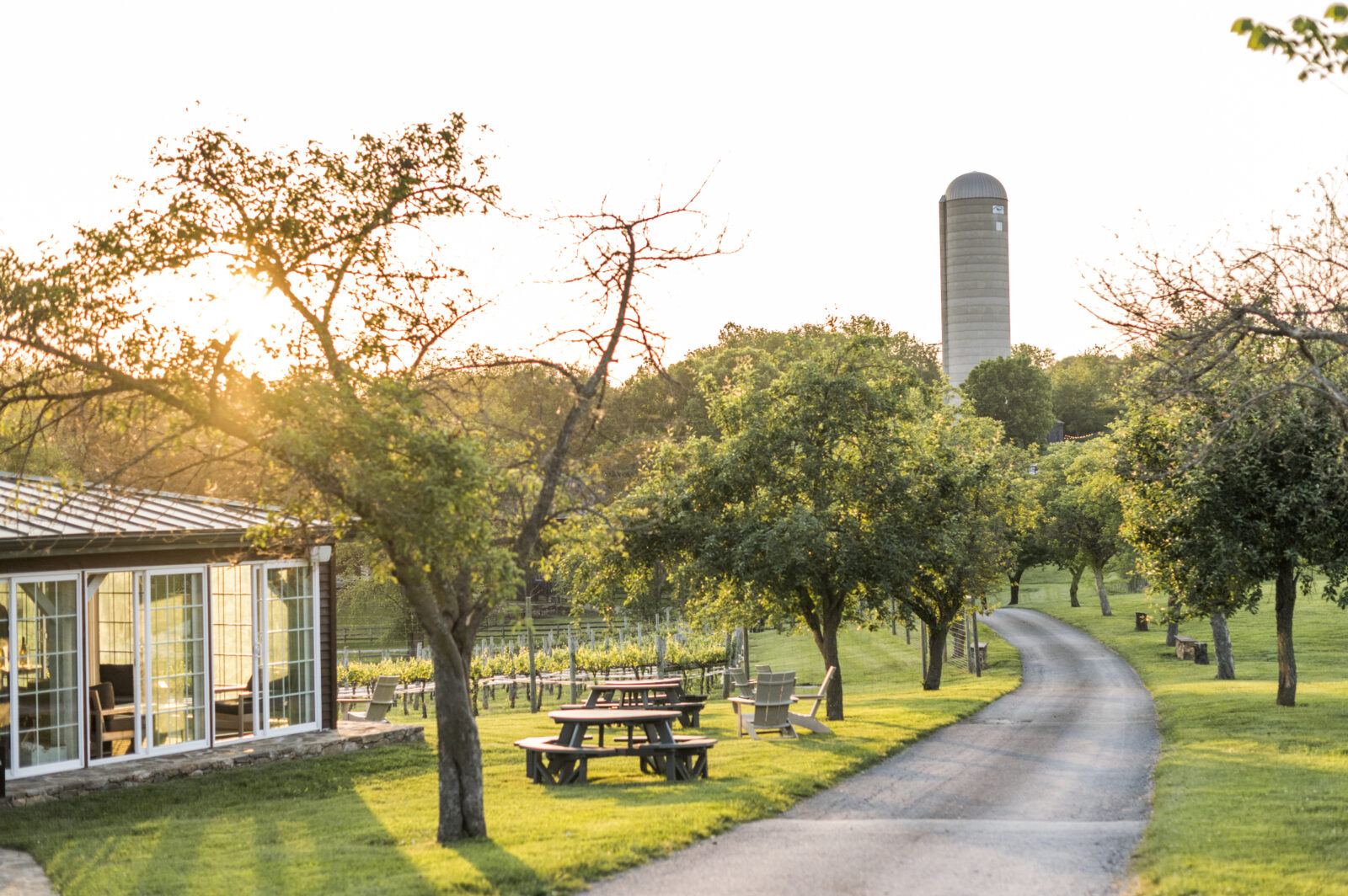
Written by Carlo Massimo
Snickers Gap is a low break in the Blue Ridge Mountains, shaped in a broad wedge, with the point nestled against the Shenandoah and the rest fanning out toward Bluemont and Round Hill. It takes its name from one Edward Snickers, who bought an estate on this flat patch of country from George Washington’s brother in the 1770s. Down the middle of it runs VA Route 7, the old Snickersville Pike, one of America’s first private highways. In the choking, miserable heat of July 1864, Confederate General Jubal Early retreated down this road after his aborted raid on Washington. Union cavalry pursued them from Purcellville through the gap to the banks of the Shenandoah, where Early turned and scattered them.
Route 7 is an ordinary highway today, and it’s hard to imagine long columns of horses raising dust under the walnuts and oaks from the window of a car. Your correspondent found himself doing just that, however, from his Kia Rio. Decidedly less heroic than a horse — but Middleburg Life dispatched me westward in pursuit of less prickly targets than armed men. The Snickersville area makes wine now, with dozens of wineries (and breweries, and at least one excellent distillery, Catoctin Creek). If you want to know the area, you could do a lot worse than to start at its tasting rooms.
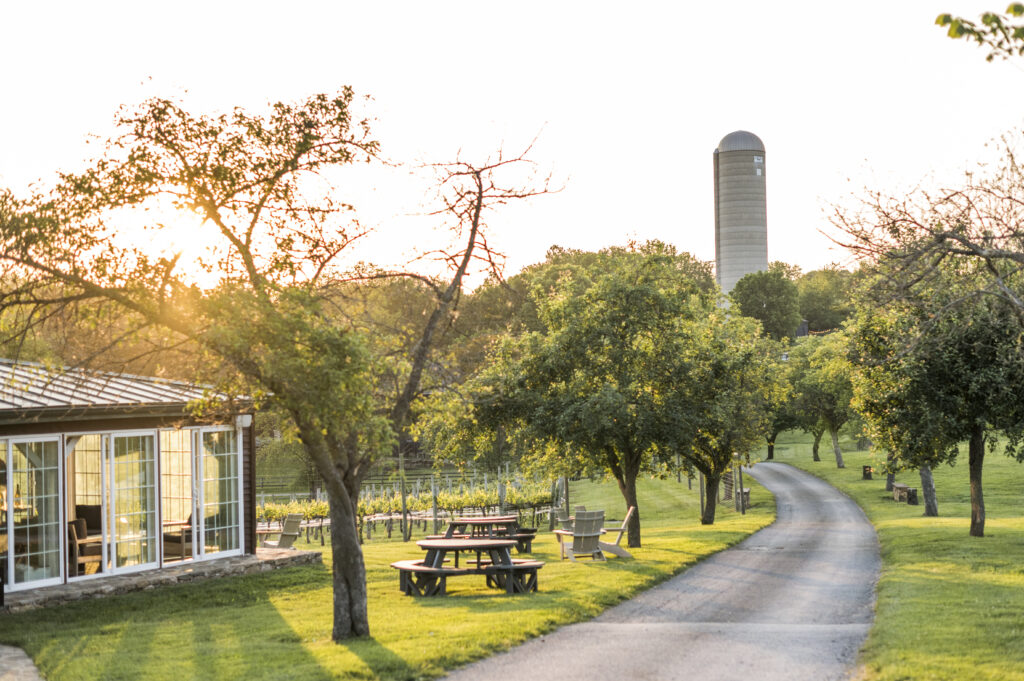
Otium Cellars
My first stop was Otium Cellars, perched on the Gap’s eastern edge. The drive is lined with apple trees and ends with a horse barn and a patio with firepits; from the patio you can see the dramatic slope of the hill, 10 acres of which are under vine.
Otium specializes in German and especially Austrian varieties: Grüner Veltliner, Blaufränkisch, Dornfelder, Zweigelt. These varieties are not unheard of in Virginia, but no other winery specializes in them. A German engineer had first planted the 10 acres surrounding the Otium tasting room in 2007, which opened commercially in 2012. (Liz, behind the bar, points out that the gute Herr built the property’s timber Weinhaus himself, and without a single nail — every joint mortise-and-tenon.) In 2021, entrepreneur and equestrienne Anita Tanamala purchased Otium, but kept the rare varietals; she works with the Middleburg winemaking legend Sébastien Marquet to supplement her 10 acres with grapes from the West Coast and elsewhere.
Otium offers a variety of tasting menus, but “Taste of Germany/Austria” captures the best of this boutique. The tasting begins with a crisp Grüner Veltliner, a white with apple notes and — the printed menu isn’t lying — a bit of pepper on the back. The reds have a bigger personality. The 2016 Cuvée Maximilian is rich and velvety with unexpected savory notes. The 2017 Blaufränkisch Reserve was more surprising: Blaufränkisch is a dark, racy Austrian red, in character somewhere between Syrah and the Gamay noir that goes into Beaujolais. Otium’s is lighter than expected, red fruit forward and a definite oakiness. But the 2015 Dornfelder was the highlight of the menu; a very dark red, full-bodied and aromatic, it’s nevertheless much more subtle than the Cuvée or the Blaufränkisch. “Brooding” is the word for this one.
Liz shared that one of the most popular wines by the glass at Otium was the Malbec, so I had a glass of that, too. It’s fresh and medium-bodied, with enough nuance to keep you interested but an easy pairing with almost any food that takes red wine, from steak to hors d’oeuvres.
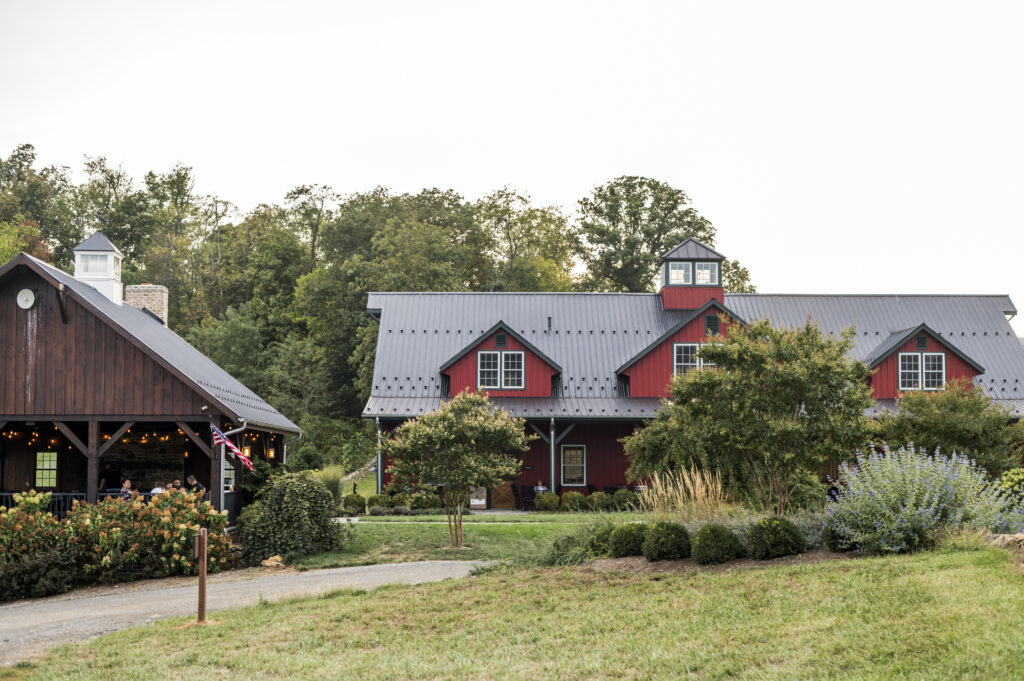
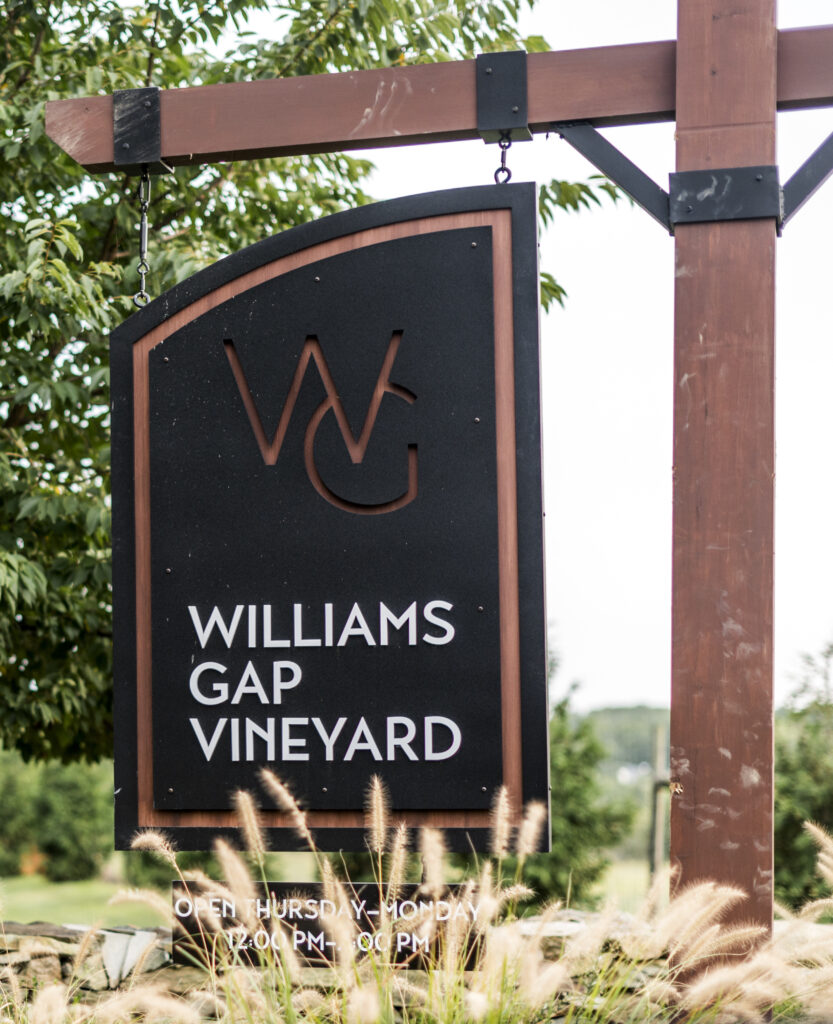
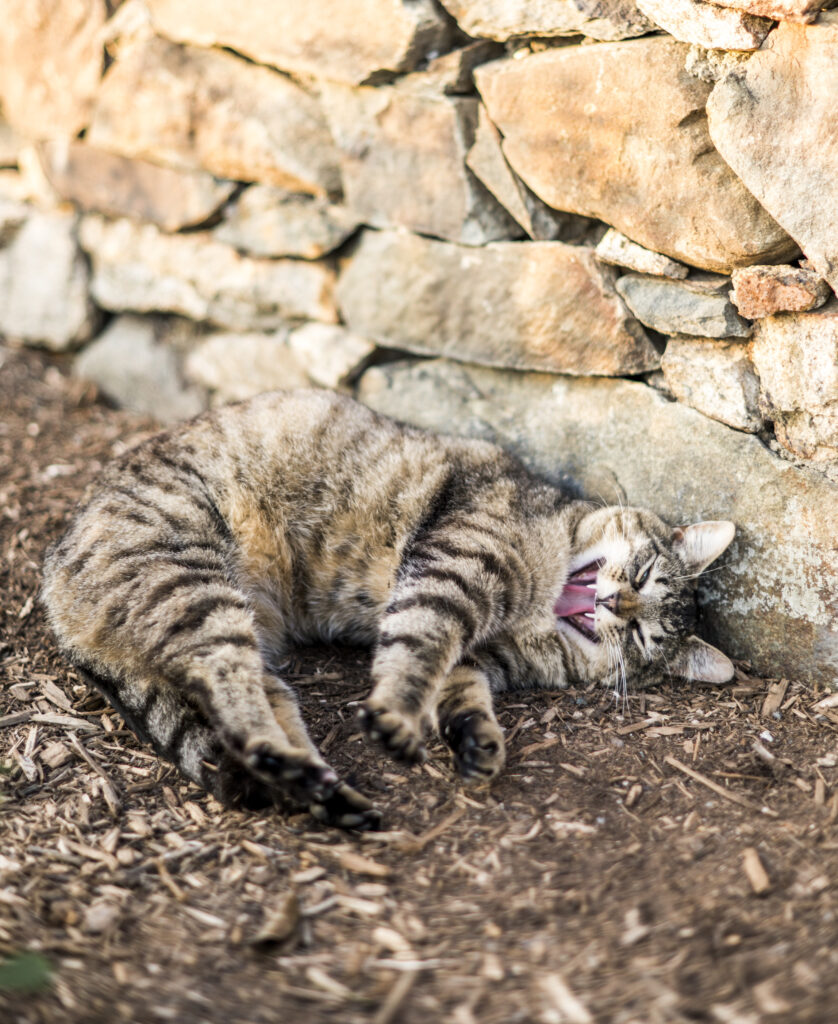
Williams Gap
My next stop, as I pressed toward the Shenandoah, was Williams Gap in Round Hill. Arriving at Williams Gap was like falling through the looking glass. A very small and unassuming country lane leads off onto a 200-acre property, with a pond, newly planted plane trees, and, in mid-September, fat, tumbling bunches of grapes in the vineyards. Forty acres of Williams Gap’s land are under vine, with six white and six red varietals, mostly Bordeaux. Jack Sexton, a wine-loving veterinarian from McLean, bought the property in 1983 with plans to grow grapes. He finally got around to it in 2006, and opened for business in 2021.
The busy tasting room is magnificent, the Sistine Chapel of the rustic-chic Instagram set, with a fireplace, a loft, and a long, stone-topped bar. Behind it, Bridgette Smith, tasting room manager, was waiting for me. Bridgette presented three reds in minimalist apothecary jars: the 2021 Round Hill Red, the 2021 Merlot, and the 2021 Cabernet Sauvignon. The most surprising of these was the Cabernet Sauvignon. It had the characteristic vegetal notes of the varietal, and yet it was the lightest-bodied I’d ever tasted. Bridgette laughed. “Most people who try this blind think they’re drinking a Pinot noir. The climate is so wet here that the flavors just don’t concentrate the way they do in drier regions, like France or California.” Incidentally, that washing-out tendency is why so many Virginian vintners grow thick-skinned, strong-flavored reds for their blends, like Petit Verdot or Tannat. (Williams Gap grows both; Otium grows heavyweights like Zweigelt and Dornfelder for the same reason.)
The Merlot was fruity and delicate, with strong blackberry notes, rather like a California Zinfandel. The Round Hill blend, half Cabernet Franc and a quarter each of Cabernet Sauvignon and of Merlot, had, predictably, greater structure and a slight, very pleasant earthiness.
The afternoon was getting on and I had more of the Snickersville Gap to explore; otherwise I might have spent the rest of the afternoon with Bridgette. I didn’t get to try the Petit Manseng, a white that won silver in the Virginia Governor’s Gold Cup. I was due elsewhere.
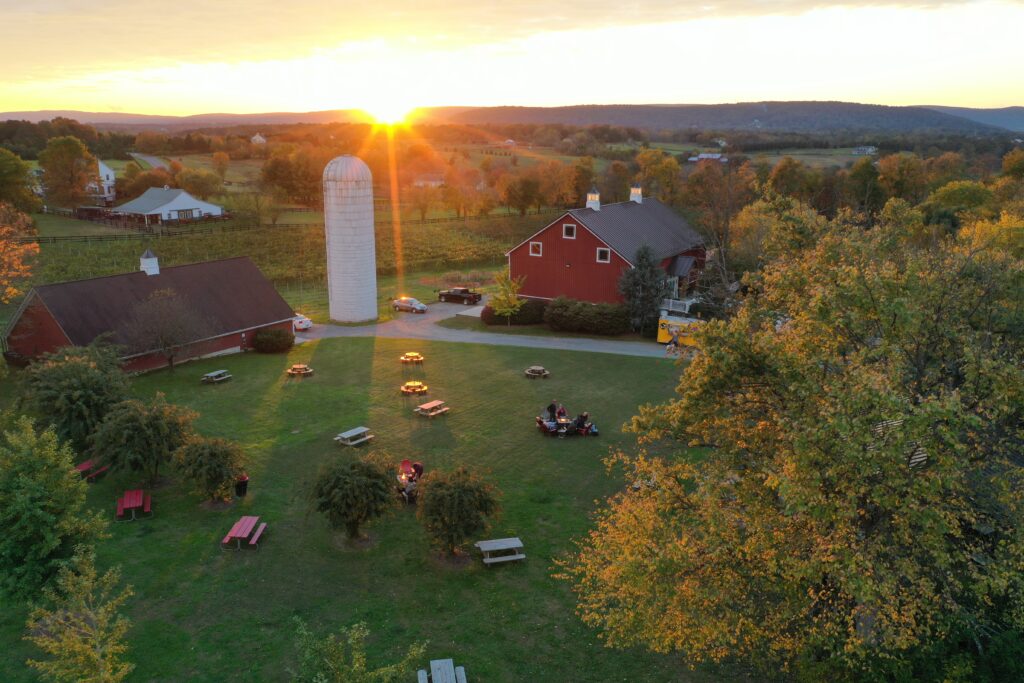
Sunset Hills
Though technically in the Waterford Cluster, Sunset Hills is nearby and worth a visit. It used to be an Amish farm, and the tasting room I stopped at was an old barn, with hayloft intact. But don’t let that put you off. Winemaking is a serious business here; one of their innovations is a set of customized concrete tanks, which offer some of the breathability of oak but without the distinctive taste. Sustainability is another of Sunset Hills’ priorities: 245 solar panels cover 75% of the property’s annual needs, and there’s a Tesla recharging station on site.
Like many Snickersville Gap wineries, Sunset Hills has racked up its share of medals. They show an enormous creativity: the Single Day Cabernet Franc, for instance, is made entirely of one varietal, from one vineyard, picked not only in the same year but on the same day, to give the drinker a perfect expression of the grape. The Cabernet Franc reserve is robust and aromatic, with strong cocoa notes. Sunset Hills grows Cabernet Sauvignon as well, and makes a rosé that Mike behind the bar warned me would taste like a Jolly Rancher candy. He was right.
My favorite of the Sunset Hills blends was the Mosaic, floral and alluring with rich, dark notes from its Cabernet Franc base. The 2019 vintage tastes like it might age well for another decade.
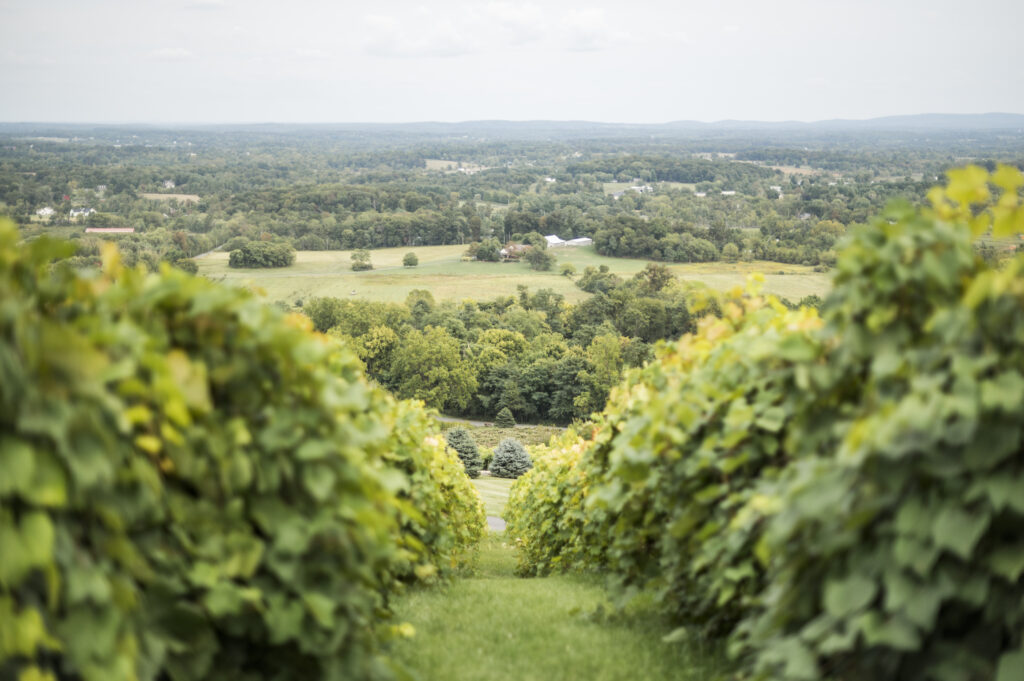
Bluemont Vineyard
A funny thing happened in the Sunset Hills tasting room. As I was drinking my way through the tasting menu, and gallantly ignoring the spit bucket, I overheard a conversation about a very old variety that once was typical of the Snickersville Gap area. It was called Norton, and its high sugar content (and consequently high-octane wine) made it popular during Prohibition. The taste, I heard, was revolting, and most vintners had torn it out and replaced it half a century ago.
Bluemont Vineyard still made a fortified Norton, they said, but they warned me that the taste was earthy, faintly like a barnyard. (“Like manure,” someone volunteered.)
Reader: Your correspondent is a cigar smoker. The promise of “earthy” and “barnyard” was enough to take him, at the end of the day, up the 950-foot hill overlooking the Gap, past the granite boulders and the apple orchard, to the Bluemont Vineyard tasting room. I staggered in and asked Kathleen about the fabled, forgotten, much-abused Norton.
“Do you mean the Pig?”
And she produced a bottle that said, duly, The Pig. It was not, as I’d been told, a fortified wine. Nor did it taste like manure. The barnyard comparison, however, was apt. This was a rustic wine, spicy like Armagnac, with dry and leathery notes that balanced the fruit. It was a charming wine, as charming and surprising as the region that made it, as full of history and as deliciously secret. ML
Published in the October 2023 issue of Middleburg Life.








